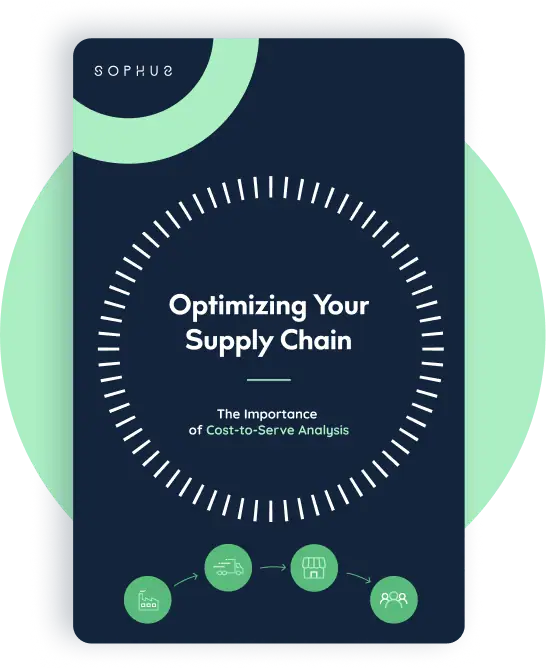Are you struggling to keep your supply chain network running smoothly year after year?
The reason could be the lack of a clear and structured plan. This is where the Annual Operating Plan (AOP) comes in. AOP is a financial planning tool businesses use to increase their revenue for the upcoming year.
It has been noted that companies that have effectively planned their supply chain are more likely to have lower inventory levels.
AOP makes companies successful by providing clear performance metrics and allocating resources effectively. This article further explains the significance of AOP for long-term success in supply chain management.
The Strategic Role of AOP in Supply Chain Optimization
An Annual Operating Plan (AOP) is essential for organizations. It helps in the management of Supply Chain Network activities by providing a guide to help them meet their goals. AOP is a detailed plan that is used to create specific strategies.
A well-established AOP explains the organization’s objectives to stakeholders. It ensures better inventory management by managing the proper use of resources.
It provides a clear roadmap for optimizing operations and managing costs throughout the year. Supply Chain companies can ensure that all their activities are focused on key performance areas including logistics, inventory management, and customer satisfaction.
Implementing AOP Format in Supply Chain Management
Following the Annual Operating Plan format in supply chain management helps businesses streamline their operations. It provides a clear and structured plan for the year ahead. Some ways in which a thorough AOP format helps include:
- It allows businesses to forecast demand, allocate budgets, and set spending limits for the year.
- Anticipating potential challenges such as supplier disruptions, logistics issues, or market changes, enables companies to develop contingency plans.
- The goals become clear and a roadmap is provided to track performance.
How to Develop a Comprehensive Annual Operating Plan
After understanding what an annual operating plan is, here are the steps to develop a comprehensive annual operating plan template for better Supply Chain Optimization.
Setting Clear Objectives and Goals
The first step in the creation of an annual operating plan template is setting clear goals. This can be done by following the SMART Framework. The objectives in the SMART framework include Specific, Measurable, Achievable, Relevant, and Time-bound.
For instance, if your company’s goal is to reduce lead times by 15% in a year, you can break it down into smaller targets like a 5% reduction in the first quarter.
Identifying Key Performance Indicators (KPIs)
It is essential to select KPIs that directly measure the supply chain performance. Essential KPIs include on-time delivery rates, inventory turnover, or cost per shipment. For Supply Chain optimization, KPIs must be easily trackable to measure the progress accurately.
Developing a Realistic Budget
Budgeting is essential to set realistic goals for the whole year. The annual operating plan format includes expenses of warehousing, logistics, technical operations, and transportation costs.
The budgeting should be clear and realistic. Companies must consider the fluctuating fuel prices and other variables that could affect the cost in the long run.
Defining Roles and Responsibilities
It is essential to clearly define the roles and responsibilities of a supply chain management team. The specific persons must be allocated to deal with inventory management, monitoring transportation requirements, and dealing with supplies.
Creating an Execution Timeline
The next step is to create a tentative timeline for the implementation of the supply chain optimization plan. The timeline should have specific milestones, deadlines, and strategies to tackle unforeseen challenges. A well-formed timeline keeps the company aligned for a year and helps it to meet realistic goals.
The Benefits of Annual Operating Plans in Supply Chain Management
Here are the benefits of Annual Operating Plans in Supply Chain Management:
- Strategic Alignment
An AOP creates alignment between the financial and operational goals of a supply chain company. It increases investor’s confidence and creates a strong foundation for achieving annual goals.
- Resource Allocation and Financial Discipline
Annual Operating Plans also enable accurate financial planning. Hence, it allows businesses to plan revenue and expenses by setting realistic annual targets. They can efficiently use resources to manage costs and avoid unnecessary inventory.
- Performance Evaluation
Annual operation planning establishes both financial and non-financial KPIs. Therefore, it helps businesses track operational metrics, step change their performance, and identify areas for improvement throughout the year.
- Enhanced Risk Management
With AOPs, businesses anticipate supply chain risks. They can develop contingency plans and recover from disruptions. It ensures smooth operations even in unexpected situations.
- Optimized Resource Allocation
A well-formed Annual Operating Plans template also enables supply chain companies to allocate materials, labor, and time efficiently. It improves the cost-effectiveness and productivity of businesses. It helps them tackle peak demands efficiently.
How Sophus Technology Helps
Sophus helps in the management of the supply chain network in the following ways.
Balances production and distribution across multiple sites
With Sophus, companies can make informed decisions through the analysis of production and distribution requirements. It makes sure that the optimal balance is achieved between these operations to reduce any inefficiencies.

Considers OEMs during peak periods
Sophus considers the challenges faced by Original Equipment Manufacturers (OEMs) during high-demand times. It lets businesses adjust their production and distribution strategies to handle peak demands effectively.

Evaluate logistics, OEM, and in-house manufacturing costs
Sophus also analyzes the financial trade-offs between logistics expenses and manufacturing expenses. It considers various factors to help businesses make cost-effective decisions to optimize overall operations.

Accounts for tier-based OEM cost structures
Sophus deals with complex cost structures of different OEM tiers. It allows businesses to manage relationships with various OEMs effectively. With Sophus, supply chain companies can ensure that production and distribution decisions align with their specific pricing models.

Analyzes transportation lanes and costs
Sophus evaluates the transportation routes and cost-effective transportation solutions. It helps businesses streamline logistics and reduce transportation costs. It improved the efficiency of a supply chain network.

Conclusion
AOPs are essential for effective supply chain management as they provide a roadmap for aligning various factors. An effective plan deals with the production, distribution and financial goals of a supply chain network.
Sophus AI’s role in the creation and execution of an AOP annual operating plan is vital. Its AI-driven platform helps businesses evaluate various key factors that align with the platform’s long-term goals.









